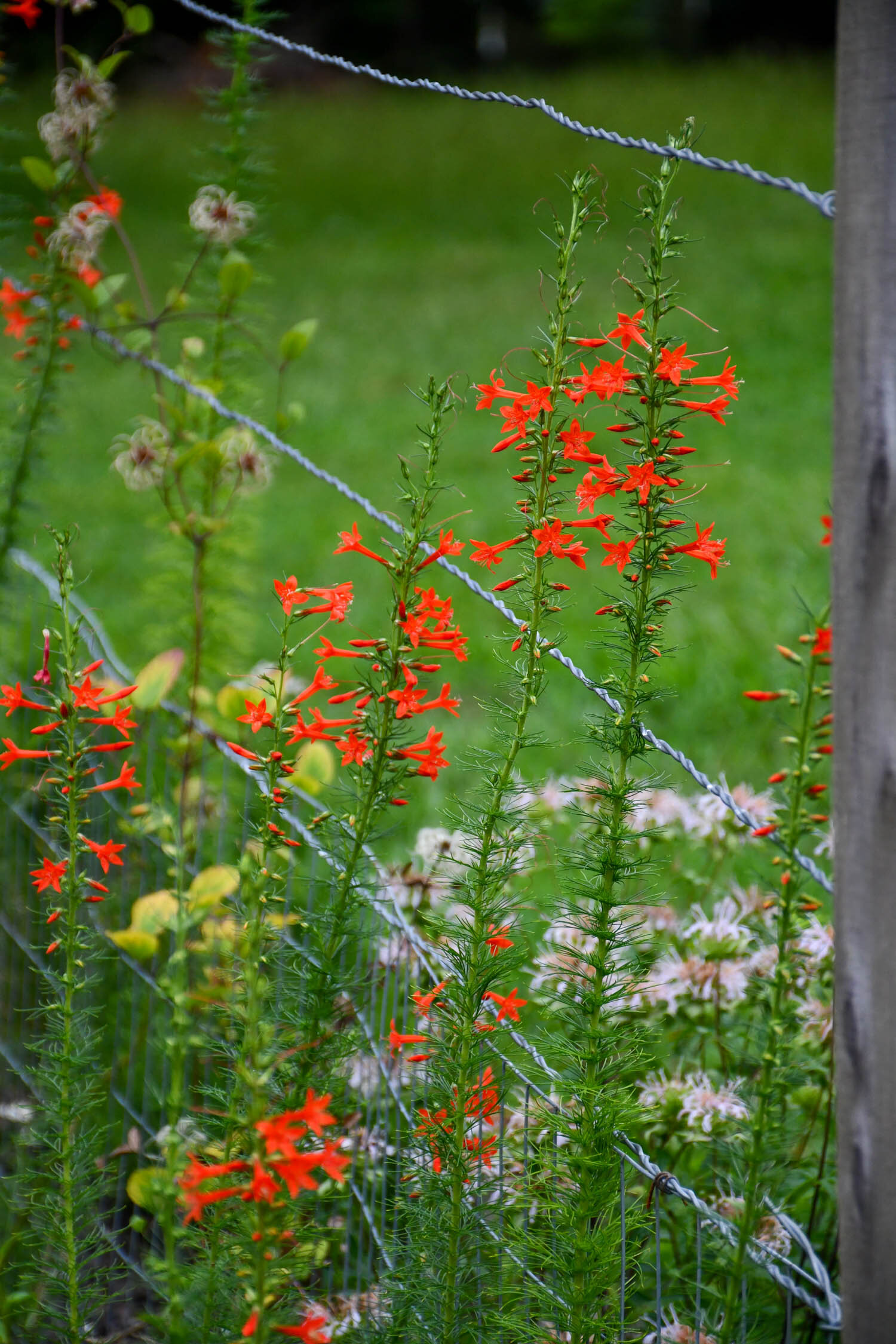Ipomopsis rubra has started flowering in my garden for the first time this year. My genetics came from a single roadside plant near town that I saw blooming last year. I lucked out getting the seed just before the mowers came along for their annual July cut.
I sowed the seed last November into a cold frame and was surprised when they germinated within a week, an observation that suggested there was either no dormancy mechanism or that dry storage had allowed time for after-ripening. Three months later in early February, I transplanted the dew-collecting basal rosettes to a bed once they had had a chance to bulk up some foliage. And, now I’m able to enjoy the results of my labor.
Ipomopsis blooming along the fence that surrounds our patch
I like watching Ruby-throated Hummingbirds flit through my plants. The red, tubular-to-salverform flowers and the high nectar content are tell-tale characters that these avian foragers visit the plants. Researchers have even noted that the “trilevel orientation of the stamens” provide a close fit for the base of the bird’s beak, making pollen shed onto the pollinator even more efficient.
But, I should note that even before they flower, the plants have an interesting texture due to their heavily dissected foliage. Some say the leaf’s resemblance to Taxodium foliage is where this species gets the common name standing cypress. To me, they appear like giant green pipe cleaners thrust into the ground, and when the unfortunate wind storm occurs, they can bend just as easy.
Ipomopsis rubra foliage resembles Taxodium leaves. Perhaps that’s the origin of the common name standing cypress?
Next year, I’m going to sow seeds into some gravel beds to stress these biennials a bit more and keep them shorter to prevent the lodging issue. Some of mine are up to at least my shoulders. This species occurs primarily in xeric habitats across the southeast, and I wonder if our rich soil may have given them an extra boost.
Ipomopsis rubra thrives in a gravel garden in Denver.
Ipomopsis rubra growing amongst cacti, palms, and yuccas at The John Fairey Garden (formerly Peckerwood).
I’ll also take some seed back to where I collected that first handful. Just because I thieved some to get it started at my house doesn’t mean that others shouldn’t be able to enjoy roadside Ipomopsis during the summer.
Here’s to enjoying Ipomopsis for many years to come!




